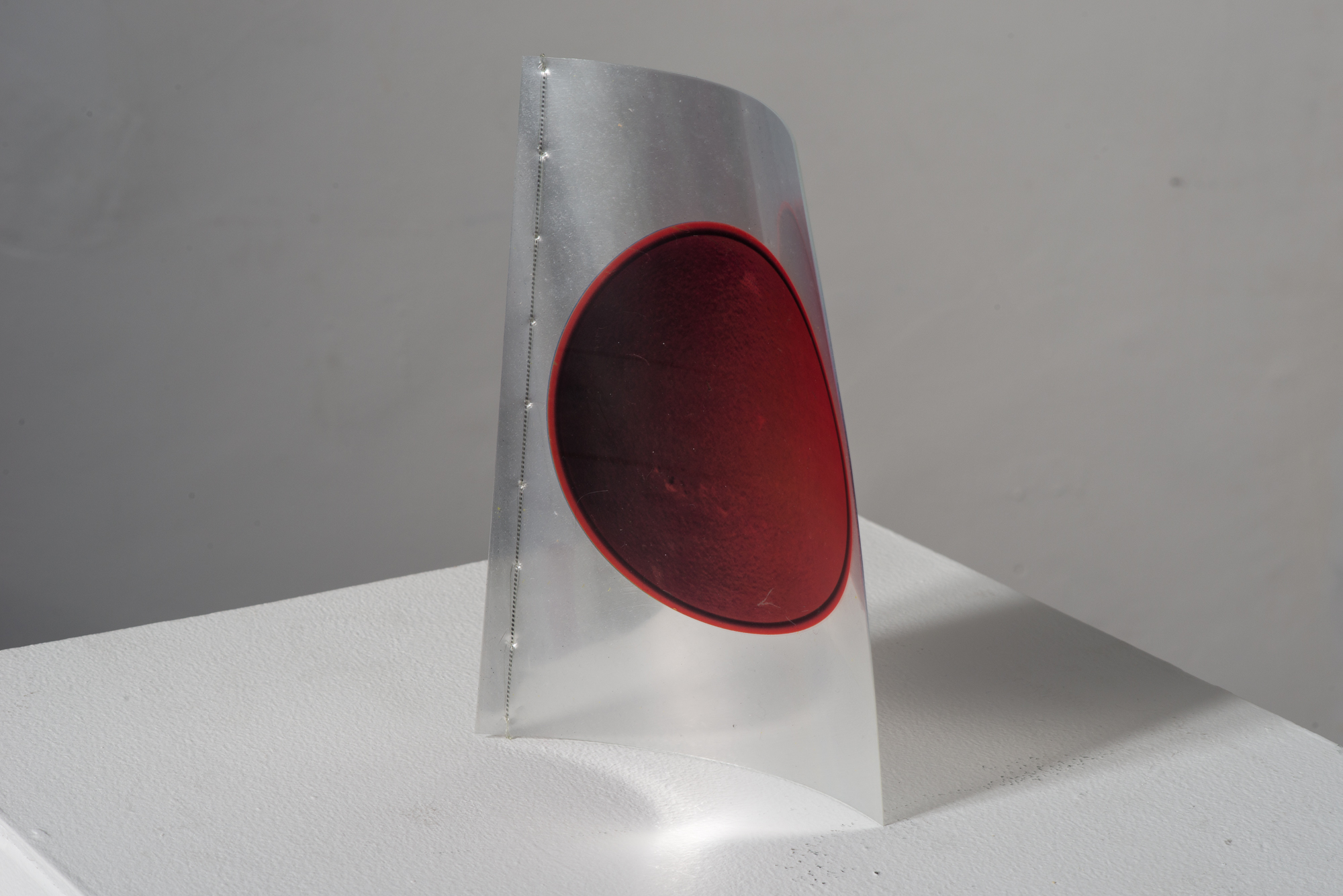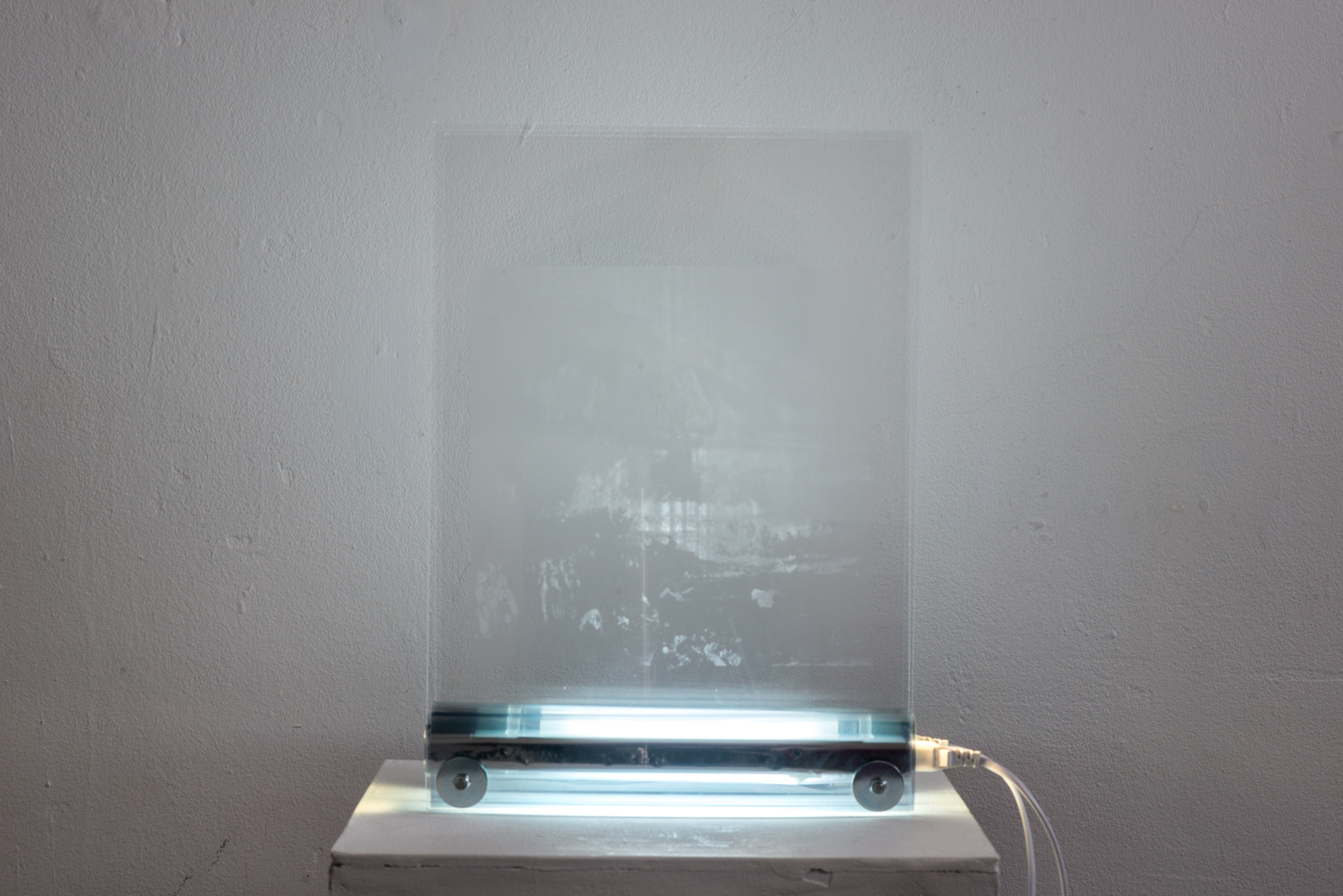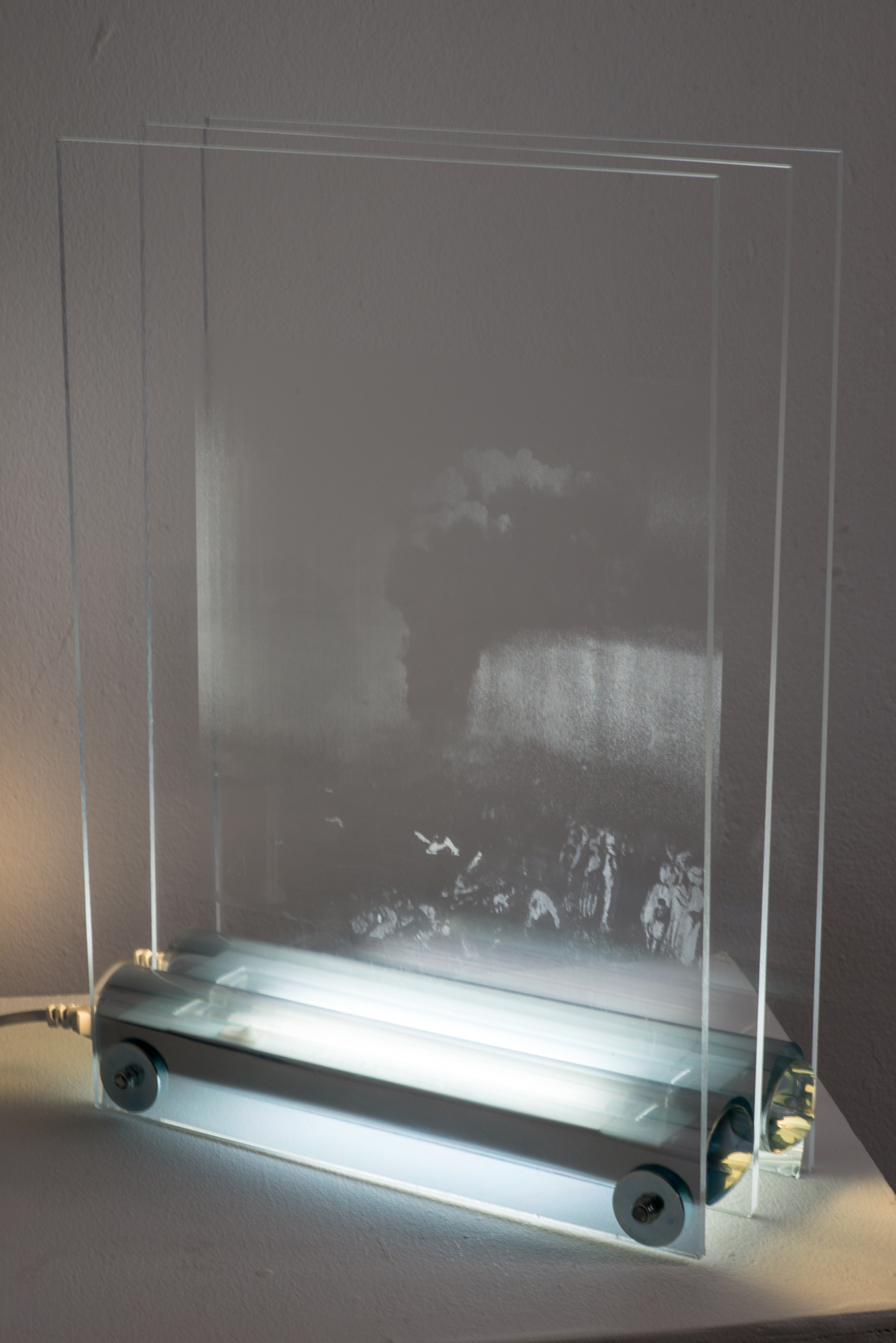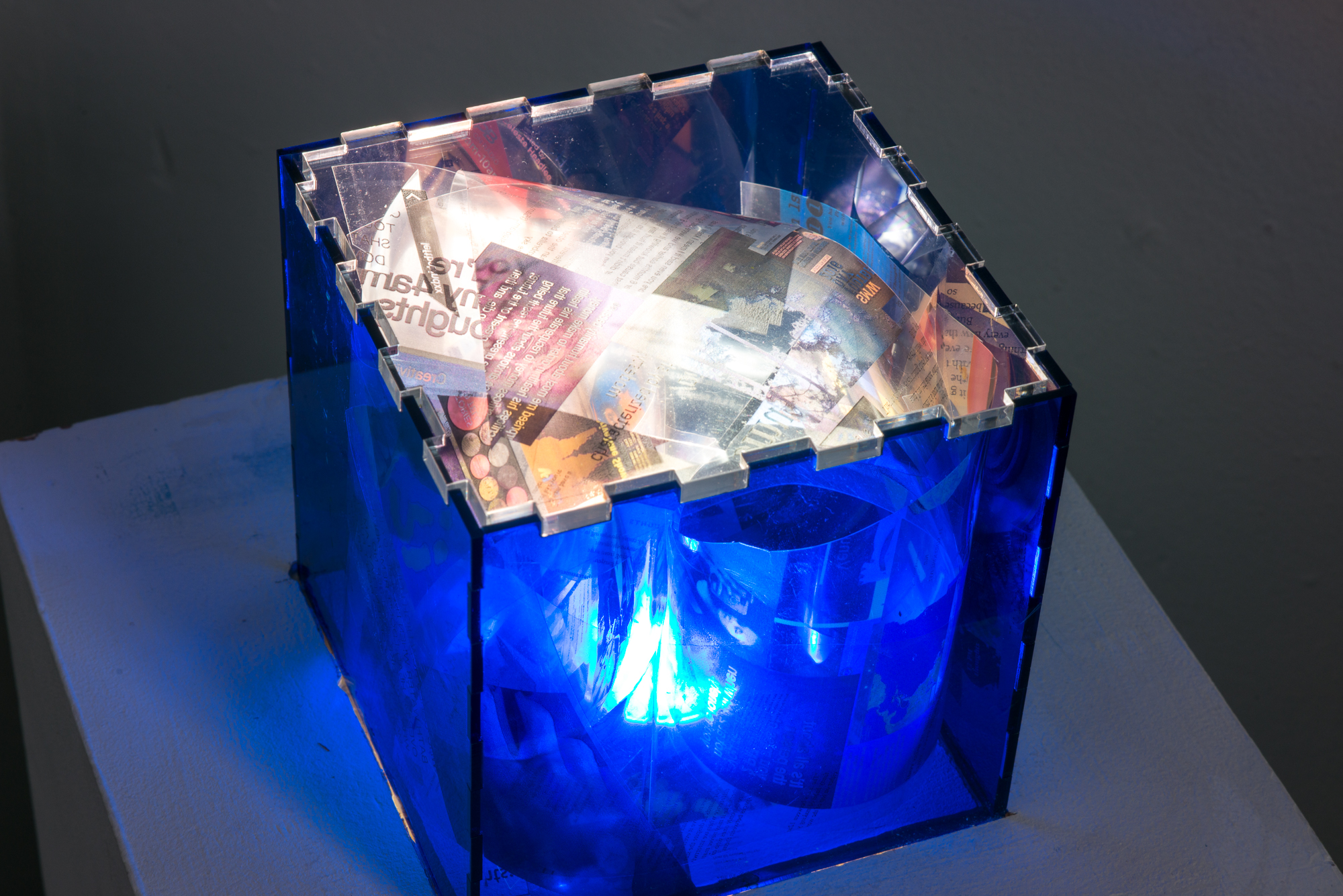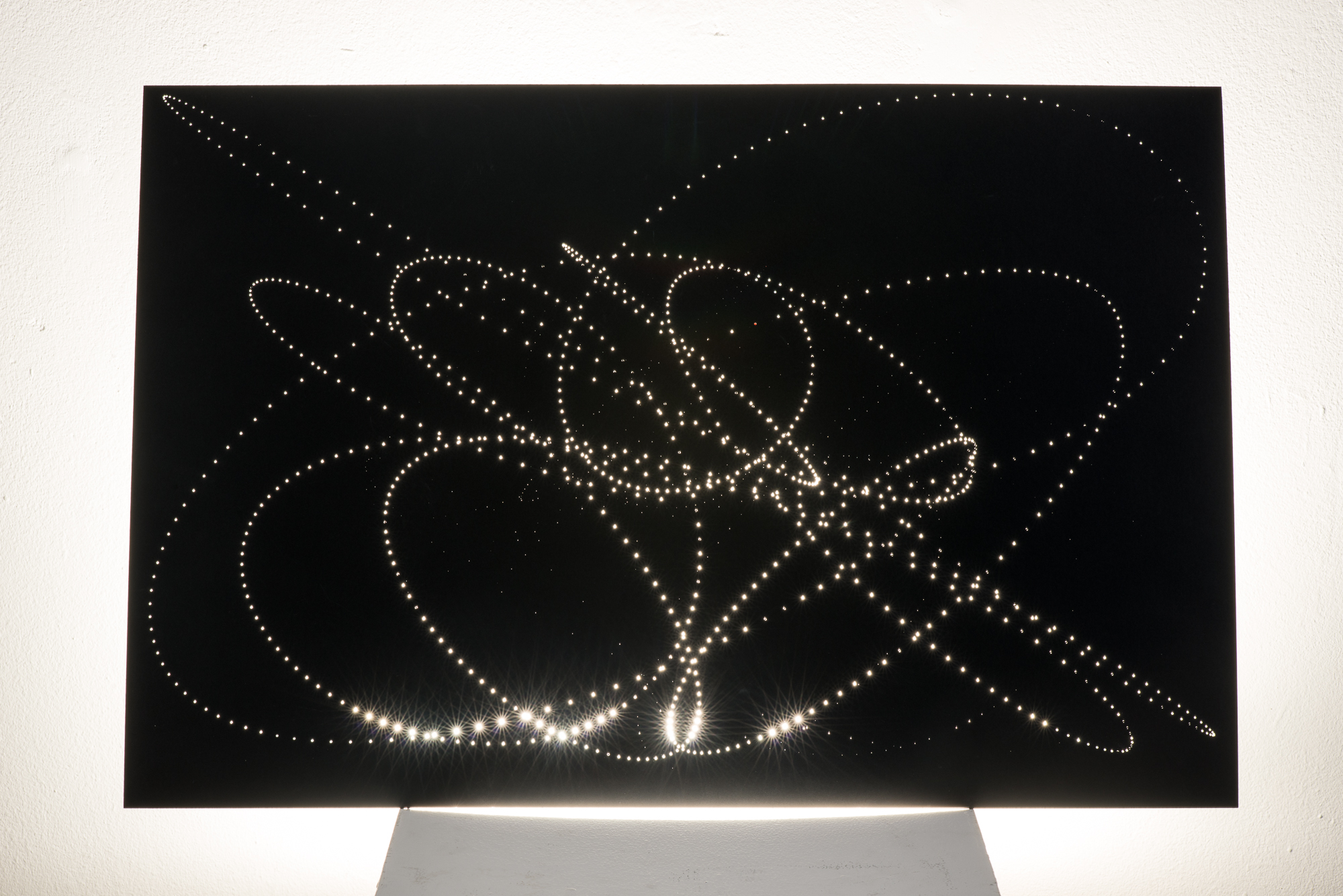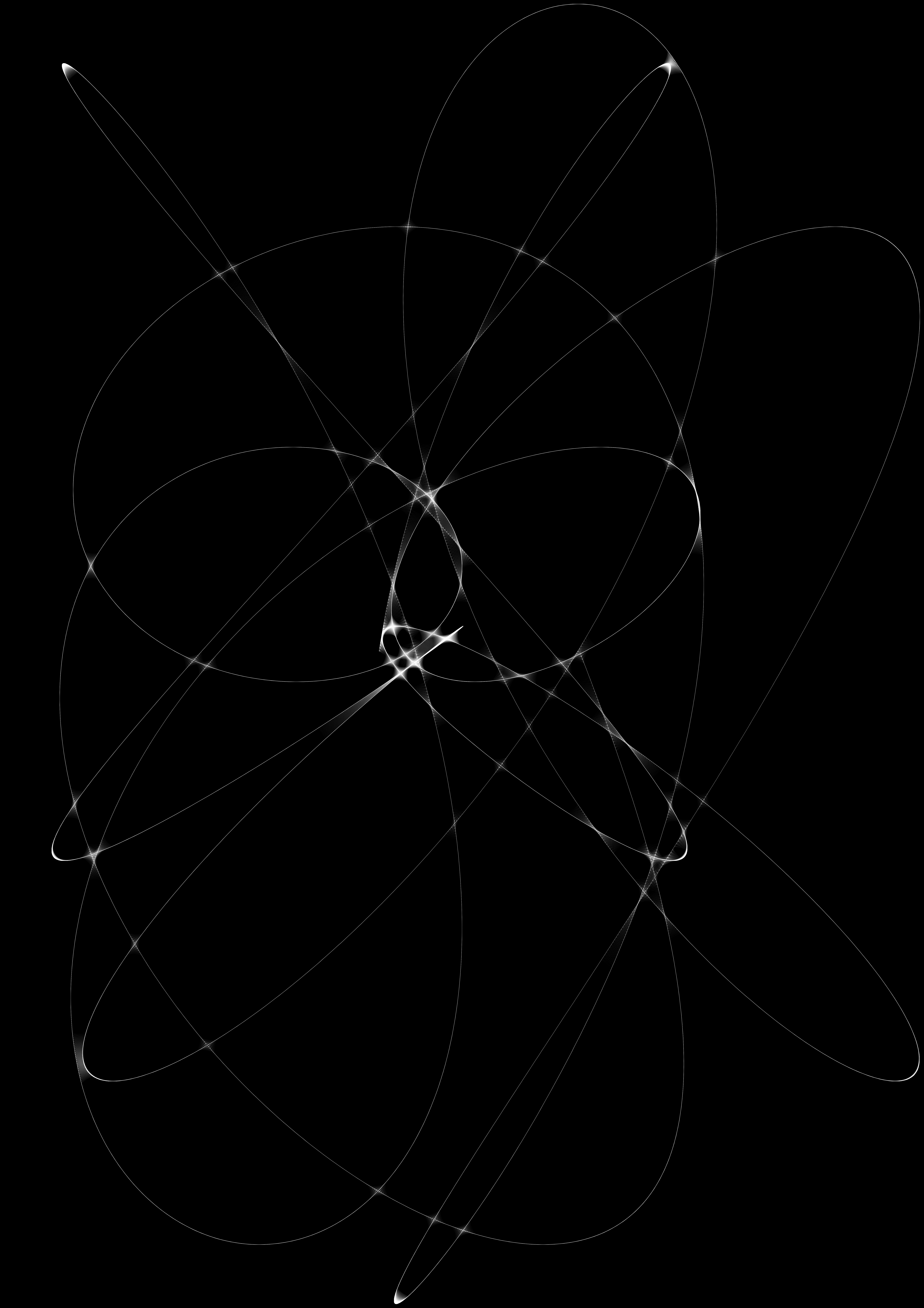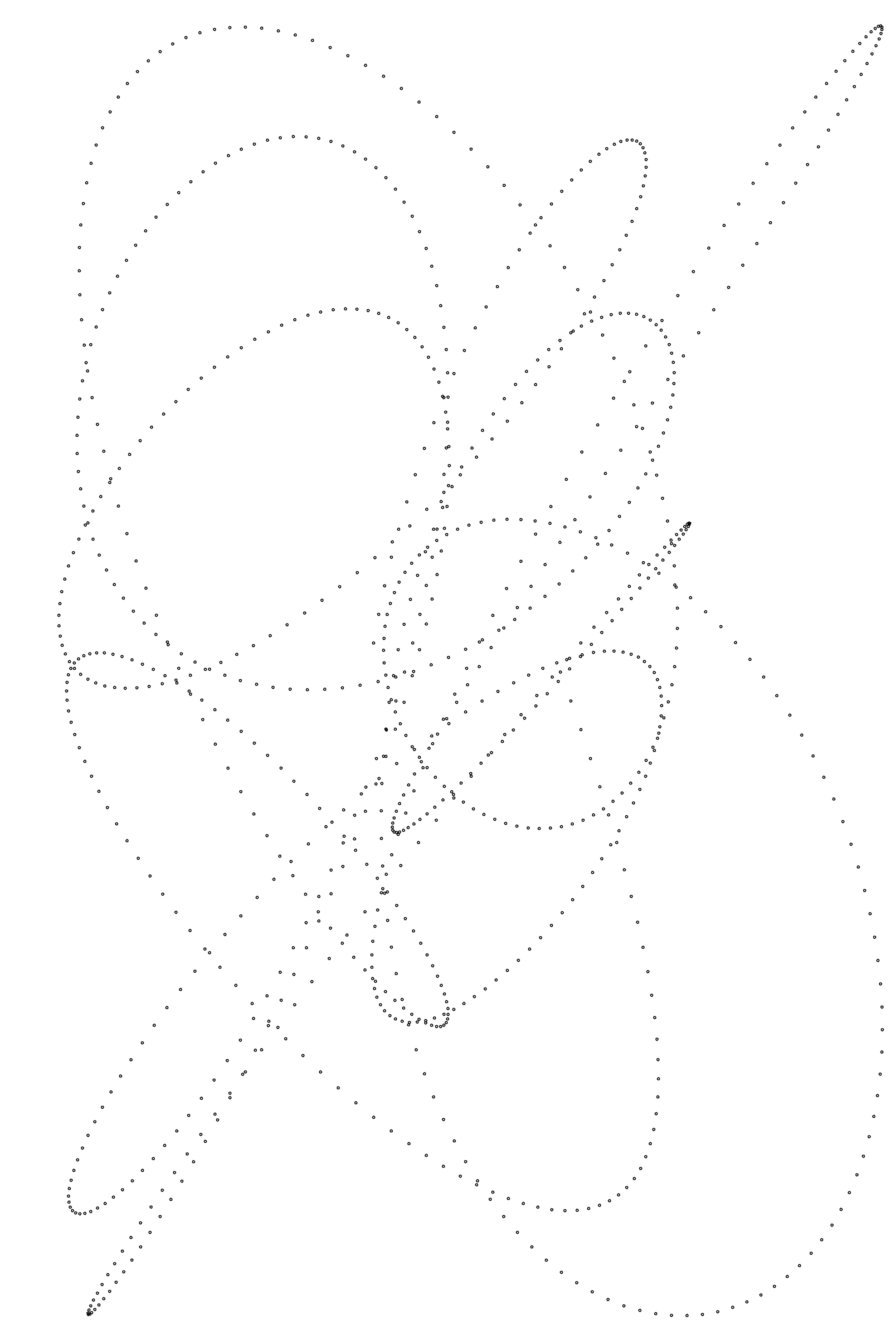5 Studies in Light
by: Howard Melnyczuk
Study 1:
-- In 1704, Issac Newton published his treatise 'Opticks: Or, a Treatise of the Reflexions, Refractions, Inflexions and Colours of Light'. The publication details his lifelong obsession with clarifying the scientific principles of light - its mechanics and behaviours. These discoveries fundamentally altered the human understanding of light, by proving its wave principles and the causes of coloration. It was a true product of the enlightenment.
In the wake of the revelations of the enlightenment, a wave of romanticism swept Europe and with it came a renaissance of poetry and advancements in the arts. During this time, the German poet Johann Wolfgang von Goethe penned 'Farbenlehre' ('Colour Theory'), a rebuttal of Newton's principles about light, defending what was to Goethe the magic and mystery of light.
1A: Opticks
-- Pixel-sorted Image Model
-- C++ - openFrameworks
----------------------------------------
-- This work takes its name from Newton's treatise. Taking the light of the Sun as its astronomical inspiration, it uses imaging made of the Sun's emissions throughout at all 7 scaled spectrums of the electromagnetic scale: radio, microwave, infrared, visible light, ultraviolet, x-ray, and gamma-ray.
For Newton, the number 7 was of hallowed significance. As a result, our common conception of the rainbow contains seven colours despite being an indiscreet gradient from one colour to the next. This work takes the 7 spectrums of Sunlight and attempts to merge them, placing them together and presenting a three-dimensional representation of their intensities. The more energetic the electromagnetic wave at any given point, the further out the model reaches. By doing so, we can begin to see another level to sunlight that is normally beyond our abilities. This attempts (in vain) to give the viewer some concept of the revelatory power of Newton's work.
1A: Farbenlehre
-- Hand-bound Laser-jet Zine
-- Transparent Acetate Sheets - Transparent Fishing Wire - Ink
----------------------------------------
-- Printed on 7 pages of clear acetate, this A5 zine is hand bound using clear plastic fishing wire. On each page, an image of the Sun is laser-jet printed at 600 DPI, and colour-coded to show its place through the electromagnetic spectrum. This provides a certain symmetry with 'Opticks', and presents a visual link between the two. The use of acetate and fishing wire was a conscious choice both aesthetically and conceptually. These materials bring in the use of oil and plastic, and also have a subtle reference to ocean pollution and over-fishing - all of which link the work to 'The View From The Shore' (3B). The transparency of the pages allows the user to layer images together and also provides a unique experience when the zine is viewed within the exhibition space.
This is the second iteration of this process, and I chose to reproduce the work so that I could use imagery that better suited the thematic concepts of the exhibition. I toyed with the idea of using pixel sorting methods to produce different images in this zine, but in the end I decided that the images of the Sun were far too beautiful as they are and that, in showing them in their original state (albeit coloured to match the colour-coding used in 'Opticks') would better suit the dichotomy between Goethe and Newton that had inspired me. The object works to remind us that whilst computer technologies can provide us with a new analysis of data sources, there is still a strong and necessary place for traditional media ecologies that must not be forgotten.
-- 'Opticks' builds on the work I did over Christmas using analysis of photographs and the colours of pixels to build 3D shapes. Moving forward I would like to do further research into pixel sorting techniques. In the processing of producing 'Farbenlehre', I built a programme in processing that sorted the 3D dispersion of pixels into pages so that a printed zine could easily be produced for print. This application could easily be repurposed for producing other layer based 3D structures.
The reason I had to do this in Processing is that whilst I greatly prefer openFrameworks as a creative environment, it suffers a number of bugs on windows that mean it cannot export images. To rectify this I am going to start dual booting and running things in Linux. I hope this will greatly improve my practice. For the time being, I have had to translate programs that are intended for print into processing, which isn't the best solution.
Study 2:
-- Newton proved that coloured light is produced not as a substance in itself as was proposed by Aristotle, but instead results from the refraction of light. This discovery provides strong evidence of light's wave properties, as it is the difference in the frequencies of light waves that allows the refraction of the rainbow. It is just this very refractive process that produces the atmospheric colouration of the sky, resulting in the sky's blue hue as well as the beauty of a sunrise or sunset. As light passes through the atmosphere, the angle at which it passes changes the quantity and relative density of the atmosphere through which it passes. The changes the degree to which the light is bent: less atmosphere at high noon causes less bending resulting in blue, and the further toward the horizon the sun moves causes more bending resulting in greens, yellows, oranges and reds.
However, this is not the whole story. Our shared perception that the sky is blue is not the result of the inherent property of the sky. Whilst the blueness of the sky results from the bending of light, our perception of this is recent (relative to humanity and the age of the atmosphere). There are no mentions of the colour blue in the works of Homer, and there is nothing to indicate that his contemporaries could even see the colour blue. There is however strong evidence that the perception of certain colours was more prevalent in areas where natural mineral deposits produced such hues. It was not until these minerals were used in the production of paints and dyes that the perceptions of the colours they produce became fixed in the brains of the peoples who used them.
Given this strong link between the perception of colour and artifice, I was eager to make works that explored the beauty of sunrises and sunsets through strictly artificial means.
2A: Sunrise
-- Computer Simulation
-- GLSL Fragment Shader - openFrameworks
----------------------------------------
-- 'Sunrise' features a virtual sun rising and falling in a virtual sky. It was written entirely in a GLSL, on the fragment shader. The nature of the shader language works perfectly for this task, both technically and conceptually. By encoding each pixel in the picture individually, and determining it's hue and brightness by mathematical principles, it makes the link between the phenomena of perception and the psychic realm of the ideal. The colouration of any given pixel is governed entirely by its distance from the centre of the virtual Sun, and as such, it mirrors the physical principle that governs the colouration of the sky.
I greatly enjoyed using the shader language to produce this work and would love to continue my study further. It marked, for me, the first time I had successfully used a shader to realise a premeditated outcome, rather than just enjoying the weird and beautiful outputs that a single line of GLSL can result in. I also added a custom noise function in order to given the shader a grain. Without this, the cleanliness and the purity of the image were rather unsettling. I feel this further illustrates our unconscious love of artifice, as we associate the presentation of moving images with the grain of celluloid or the noise of video signals.
2B: Sunset
-- Light Sculpture
-- Transparent Plastic - LED Bulb - Transparent Perspex - Metal Bolt
----------------------------------------
-- Having produced something so plainly beautiful, I wanted to take something that would normally be considered trash and make it beautiful. In doing so I also hoped to make a more direct reference to the human exploitation of natural resources and artifice. Having recently attended a talk by the artist Jack Addis, who's work explores humanity's infatuation with plastic (a topic that resonated strongly with my interests on this project), I began experimenting with transparent plastics and the refractive properties of such materials. I found that by layering plastics on top of each other, I could create the unique gradients of colouration akin to that found in the sky. By using 2-litre bottles, I was able to produce an object that fitted the A4 specified dimensions.
This use of the materiality of the plastic completed the thematic circle that I wanted to explore through the two studies. I was able to encase an 800 lumen LED bulb inside a number of layers of plastic bottles, carefully hand melting each one around the previous layer to produce a firm, dense case, where each layer had a unique character with its own imperfections and way of interacting with the light. The use of an LED bulb was essential so that the work didn't set on fire or melt (melt more) and the use of the 800-lumen bulb allowed the light to penetrate outwards. I then encased the object inside a clear perspex box, to present it as an object of inspection and further play with the subversion of what function we expect a plastic bottle to have.
-- Moving forward I would like to continue both the use of GLSL as I find it a really enjoyable way of thinking and working, 'painting with numbers' so it is. I would also like to continue an interest in experimenting with materiality that seeks to find unconventional ways of using materials we take for granted day to day.
Study 3:
-- The environmental effects of humanities relationship with artificial lighting are wide spread and often understated. In the grand scheme of ways in which human civilisation as disrupted and profiteered from natural phenomena, the over production of light is widely felt to be of minimal concern. However, light pollution affects many nocturnal animals by disrupting their extrasensory abilities to navigate, as well as the sleep and hunting patterns.
It is also linked so strongly to the history of pollution following from the industrial revolution that it should perhaps be given greater attention. Following the increase in urbanisation during the 18th & 19th Centuries, the arose an increasing demand for artificial lighting. One of the first methods for satiating this demand was the manufacture of oil lamps and candles made from the blubber of North Atlantic whales. As such, whaling became a huge industry and the Cetacean population was pretty much eradicated.
The rising costs of whale products drove the initial investments into oil. At first, the substance was felt to be both rather useless and gross. But it's flammable properties provided a cheap fuel for lighting homes and cities and so, as whale stocks dwindled, oil prospects rose. Some 150 years later, the world dependency on oil has dwarfed the height of interest whaling ever had. It is a major global economic force, but oil stocks too are beginning to dwindle and so, the methods for extracting and securing oil sources are becoming increasingly complicated and reckless. In April 2010, a deep sea oil rig in the Gulf of Mexico suffered a mechanical blowout, and the resulting spill is one of the worst singular oil-related environmental disasters to date.
3A: The View From The Highway
-- Dual Camera Interference Installation
-- C++ - openFrameworks - ofxOpenCV Addon
----------------------------------------
-- A major source of light pollution that affects animal patterns, is street lighting. Many streetlights are poorly designed, and there's a certain irony that our need for lighting that helps our nocturnal movements has such a negative effect on the navigation of nocturnal animals. 'The View From The Highway' uses two webcams that respond to movement, using a frame differencing algorithm to present the viewer with the resulting difference of the difference. As such, an image is only visible when there is movement in front of both cameras and the resulting image is a esoteric blend of the two.
This is done by first calculating the difference between consecutive images for the video feed from both cameras. This difference is then saved as an image file, and the two difference images are then processed in the same way to find the total difference between the difference.
3B: The View From The Shore
-- Double-sided Laser Engraving & Light Sculpture
-- Transparent Acrylic Sheets - Strip Lights - Threaded Rod - Semi-reflective Film
------------------------------------------
-- 'The View From The Shore' uses three A3 sheets of acrylic, separated by a pair of strip lights wrapped in a semi-reflective film, and bound together at the base with a pair of threaded rods. The central sheet is engraved on both sides using Epsom laser-cutter. One side features a rendering of JMW Turner's 'The Whale on The Shore', which depicts a whaling scene, with a distinct tale featured prominently in the centre. This image is stored in the Tate archives. The second side features an aerial photograph of the Deepwater Horizon disaster, in which the gigantic plume of black smoke forms a shape eerily reminiscent of the tail in Turner's sketch. These two images layer with each other and blend as a result of the light sources either side of the sheet. The result is that neither image can be seen in isolation without some element of the other bleeding through. As the viewer moves around the work, they are able to see different details as the light bounces off different parts of the engraving. This means the work is oddly both static and kinetic, demanding more of the viewer.
The engraved images are both produced by converting the colour images (one a painting, the other a photographer) into greyscale bitmaps. This meant that a greater control could be had over how the laser-cutter rendered the images into the acrylic sheet. Engraving into the sheet produces a frosted area that disperses light in a different direction to the clear untouched acrylic adjacent. The use of an engraving is also a nice nod to the etching methods that Turner used to reproduce his paintings. By placing the images in strict dialogue with each other, the historical significance of their subject matter echoes each other.
The use of strip lights was inspired by my deep admiration of the work of American minimalist sculptor Dan Flavin.
The possibilities that result from laser engraving are something I will continue to pursue. Using the precision of the laser-cutter, it would be possible to produce relief prints with a level of detail that has not previously been possible. It would also be possible to use new materials to produce prints. This combination of old media and new media technologies is at the heart of my practice.
Study 4:
-- As life has evolved on earth, it has always unavoidably responded to light and to the cycle of night and day and the passage of the sun. Every food-chain features a photosynthesising organism at its base. All verterbrates feature a pineal gland. The pineal gland responds directly to light, and it's behaviour is governed by both genetics and luminary environment. Its role is to regulate hormones and neurochemistry by releasing or inhibiting melatonin, which controls wakefulness amongst other things. If the regulation of this is imbalanced, there can be serious consequences for a person's mental health. Conditions such as insominia and narcolepsy are linked to the pineal gland, and Season Affect Disorder is common during winter periods at high latitudes when sunlight is scarce and the days are short.
The pineal gland has a long spiritual history, which may hint at a non-scientific intuition of its importance. It is understood as the third eye, and even as a gate way between realms of reality, be they the conscious and subconscious (in the work of Georges Bataille), or natural and supernatural (in the writings of HP Lovecraft).
By contrast, the drug modafinil is used to stave off sleepiness and to maintain high levels of concentration for extended periods. It has developed a cult usage amongst computer programmers who are seeking to maximise their productivity, as well as amongst writers. It has relatively few negative side effects when compared to amphetamines and barbiturates and so is often used repeatedly. However some users who have tried to take supplementary melatonin to eventually sleep after a period on modafinil have reported suffering from hellish nightmares and sleep paralysis.
4A: Melatonin
-- Computer Simulated Pineal Gland
-- Wekinator - C++ - openFrameworks - ofxOsc Addon - ofxOpenCV Addon
----------------------------------------
-- It is not an uncommon popular conception to see the human brain as a large supercomputer, especially now that computation is increasingly invading every aspect of our lives and culture. This is however highly problematic. We know less about the human brain than we do about the rest of the universe put together, and it is highly reductive to see the brain as an organic computer object. The parallels do however persist.
With this work, I have sought to take the contemporary area of machine learning as the subject with which to scrutinise this brain-as-computer analogy. Even the language of machine learning literature point to this with terms such as 'neural networks'. Given the relative 'perfection' of computer systems against the often ill-calibrated individual human brain, how would one understand spirituality or mental health issues within a computer model?
'Melatonin' presents a combined set of programmes which seek to explore the miscommunication between bodily organs and signals. To begin, I took the first five jpg images from a Google search that sought to find images of the sky and each hour of the day. The parameters of this search were: "[hour of the day] + sky". From this scraped batch of 125 images, I was able to write a programme that would process each and pass them to Rebecca Fiebrink's Wekinator application. Having 'successfully' trained the application, I then wrote two programmes: one that would send the simulated image of the Sun that I had coded with GLSL (2A), and one that would receive Wekinator's concept of what time of day it was being shown. The results provided by Wekinator are almost always wrong and this inaccuracy is intended to leave food for thought.
4B: Modafinil
-- Light Installation
-- Stock photos - LED lamp - Transparent Acetate Sheet - Ink - Transparent Acrylic - Blue-tinted Transparent Acrylic - Wooden Plinth
----------------------------------------
-- Expanding on the relationship between daily cycles and mental health, I was reminded of the Tumblr meme '4 am Thoughts'. The meme draws attention to the perceived cultural difference between the types of thoughts commonly had during the day and those had at night. By performing a similar algorithm to the one with which I generated my training images for 'Melatonin', replacing the word 'sky' with the word 'thoughts' and taking the first 5 jpg images returned by a search at each hour of the day. This again provided a set of 125 images, which did demonstrate a cyclic trend throughout the daily period. I then arranged these images, grouping them by the time of day, before printing them onto an A2 sheet of transparent acetate.
I then laser cut a transparent perspex box, with blue tinted sides and a clear top, which I mounted into a groove I routed from the top of a white wooden plinth. In the centre of this, I mounted an led spotlight so that it would shine upwards out of the plinth. I then cut the A2 sheet into chaotic shapes and put these into the perspex box so that the light would shine through the pages and be reflected by any curves or folds in the strips. The colours of the images would then come out of the box onto the roof and walls of its surroundings. The blue sides of the box encourage viewers to approach the work and to look into the top at the brightly lit jumble of a daily stream of continuous thoughts.
Moving forward, I would like to improve the connection between Wekinator and it's input data. The precise repetition of shader simulation means that the output from Wekinator is also repeated in a loop. I would perhaps instead seek to feed the piece some time-lapse footage of an actual sky, as I feel this would provide a varying input that would better illustrate the computers inaccurate judgement.
With 'Modafinil', I had toyed and experimented with a number different ideas of what the light should pass through. I had originally wanted something that would move constantly and independently, and so played with placing a dish of oil and water over the bulb. I hoped the slight heat of the bulb would cause a convection current in oil/water mixture, which would cause new and organic refractions of the light. This proven totally futile, and I am glad for it: the resulting idea that uses found images not only works better conceptually and thematically but has strong links with the rest of my artistic practice. The next step would be to find a way to rotate or shuffle the images inside the box to better illustrate the cyclic nature of the subject matter.
Study 5:
-- At the microscopic level is where the properties of light can be truly understood. Light is subject to the quantum phenomena that underpin our universe and as such light demonstrates a lot of quantum weirdness. For example, a beam of light exhibits both wave behaviours and particle properties. It can be conceived as either a wave or a particle, but can never be observed as both simultaneously. This can be demonstrated using a simple experiment with a pair of very fine slits and a strong light source. The passage of light through the slits will cause the light particle to interfere 'with itself'. The resulting diffraction pattern demonstrates light's wave properties, whilst the photoelectric effect used in solar panels and sensors, works to demonstrate the particle nature, as an electron of current is released whenever a single photon of light hits the photoreceptor.
Lissajous curves are produced using a pair of parametric equations and derive their shape from the difference in phase between the two. This is similar to the principle that causes a two-slit diffraction pattern - namely, that the interference that either blocks or amplifies the lightwave is a direct result of how in or out of phase the lightwave is with the light from the other slit. The are both examples of harmonic motion.
5A: K{MAX} = H*F-PHI
-- Data Generated Shader Pattern
-- Python Script (PythonOSC, ArgParse, Time, LXML, Requests) - C++ - openFrameworks - ofxOsc Addon - GLSL
----------------------------------------
-- This work makes use of the photoelectric effect and therefore relates to the particle nature of light. By scraping live data from 3 solar panel farms located in the UK, Maldives, & Australia the programme is able to draw a unique pattern that responds to the Sun in real time. The figures are scraped by the Python script, before being normalised to the same scale and passed out to an openFrameworks project via OSC. The data is then passed through a low-pass filter, and fed in turn to the shader. This shader is roughly based upon the mathematics behind Lissajous curves, and draws a grayscale pattern characterised by the phase of the different figures, and changing only when the figures change.
The title 'K{max} = h*f-phi' refers to the mathematical equation for calculation the maximum energy produced by a single photon through the photoelectric effect.
5B: THETA{f} =~ LAMDA/D
-- Cyanotype Exposure Print
-- Cyanotype On Tracing Paper
----------------------------------------
-- This work makes use of diffraction patterns, and so refers to the wave properties of light. Using a processing sketch, I first generated a Lissajous curve by feeding formatted values for the speed and Planck's constant as the phase offsets. I then saved the resulting pattern at a high resolution and exported it to the laser-cutter. This then cut tiny holes in an A1 sheet of black card. By placing this at a very short height above an A1 sheet of tracing paper treated with cyanotype photochemicals, the pattern can be exposed in the Sun. This process reveals a secondary pattern, caused by the interference between adjacent holes.
By using a photochemical to record the exposure, the piece also references the particle physics of light as the chemicals react with the photons that they contact. The title refers to the equation devised by Thomas Young, who's two-slit diffraction experiment proved the wave nature of light.
To come clean, I have yet to get a successful print of 'Theta{f} =~ Lamda/D', but I will continue to try.
I also greatly enjoyed making an initial foray into the world of Python and data scraping. However, it did highlight just how tricky it is to find good consistent data sources and the importance of correctly formatting any data acquired. I was lucky to find a website that has built an up to date database of solar farms and I found a lot of very interesting but utterly useless data sources along the way.































































